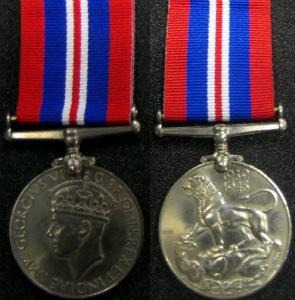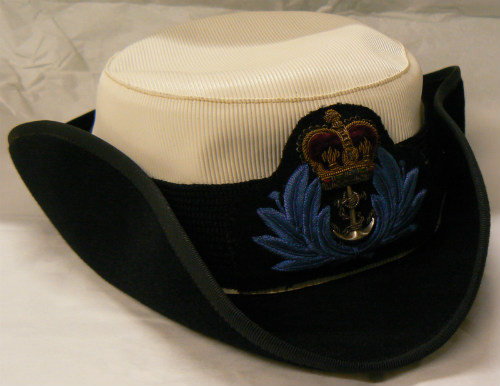'Never at Sea'... well, never say never


Uniform cap belonging to Chief WRNS Officer, HMS Eaglet, Miss PG Stubbs - 1981.730.6
It is 1917 and for the last three years war on a scale previously unseen and unimagined has been raging between the European powers. Young men have died by the thousands and the end is still not in sight. Britain is facing a shortage of manpower and finally considering radical measures; to free up men for the front, women will be asked to volunteer with the services to fill non-fighting roles.
Women meanwhile cannot vote or stand for election to parliament. Conscription for men had been introduced in 1916 but no one had seriously suggested women belonged in uniform until it became clear that their practical support was desperately needed. Between 1917 and 1918 Army, Navy and Air Force each developed their own women’s support service.
For the Royal Navy this was the Women’s Royal Naval Service (WRNS) founded in 1917, with its members quickly becoming known as Wrens. Of all the spaces women would find acceptance in throughout the following century, the Navy was in 1917 one of the most thoroughly male. At the start of the war the Admiralty had not even allowed female civil servants, so women in uniform three years later was a hugely significant step.
Women at sea however was still a step too far for the Royal Navy in 1917. Indeed the Wrens motto was ‘Never at Sea’, the idea being that the women would serve in supporting roles firmly on dry on land. However they did not remain confined to the clerical and catering jobs the Navy had first intended. As the war went on and the struggle for manpower increased, Wrens took on jobs driving, sail-making, maintaining aircraft, signalling and coding. Some even served overseas in Malta, Gibraltar, and Italy, though still on land rather than at sea.

Wrens overhaul warships guns, 16 March 1943, Liverpool © IWM (A 15160)
Disbanded at the end of the First World War, the Wrens were reformed for the Second World War, again with the idea to ‘free a man for the front’. Things had changed in the interwar years though, women had gained the right to vote, the first women had been elected to Parliament, and technology had created new and exciting roles which the new intake of Wrens knew they were capable of. Wrens in the Second World War became radio operators, meteorologists, and most significantly began a move into ocean-going roles such as cypher officers.
With increased excitement and responsibility though came increased risk and 21 Wrens were lost when the SS Aguila was torpedoed en route to Gibraltar in 1941. Cypher officers and wireless operators, the women on board had been amongst the first Wrens to volunteer for service abroad.
By the end of the Second World War around 75,000 Wrens had served. After the Normandy landings in 1944, hundreds served in Europe supporting the advancing Allies. In recognition of outstanding service, the WRNS was made permanent in 1949 with a regular force of 3,000 retained. This however was on the understanding that the women would be excluded from seagoing, flying, and weapons training roles.
Change however was inevitable, women had already proven themselves during the war and they weren’t content to be excluded for long. The 1970s saw Wrens start to take to the sea once more, and even to the air in naval helicopters. In 1976 the women were brought under the same disciplinary code as their male colleagues and men and women began to train together. In 1980 the first woman took command of the Navy’s flagship shore establishment, HMS Warrior at Northwood.
In 1993 the Wrens were dissolved once more, but this time to fully integrate the women into the Royal Navy. Existing Wrens were asked to volunteer for sea service and many did so, proud to step out of the ‘supporting’ role they’d been classed in for so long. Future Naval recruits, whether male or female, would all need to be prepared for sea service.

1939-45 War Medal (front and back shown) awarded to Wren Eleanor Jean Welch - MMM.2014.5.15
Since then the women of the Royal Navy have seen service in conflict, been highly decorated, and qualified as pilots, divers, submarine crew, and just about everything else their male colleagues qualified to do. They have done things their 1917 predecessors could only have dreamed of, but that they have done so is tribute to the trailblazing women who served before them.
Here at the Maritime Museum we mostly focus on the merchant seafarers so key to Liverpool’s story, rather than the story of the Royal Navy, but it’s impossible to deny the impact the Wrens had on inspiring women to take to the seas in the 20th century. They were by no means the first but it was a key step in acceptance of women in what had been a very male dominated world.
Women still face different challenges in going to sea than men do, from wider issues of discrimination to specific practical considerations such as the ‘one size fits all’ approach of some Personal Protection Equipment (PPE). When that ‘one size’ is a male shape, it creates further risks for women from the very things meant to protect them, due to the poor fit.
Though there is still plenty of work to be done in encouraging and supporting women at sea, the Wrens were early pioneers, proving themselves in a man’s world and ultimately winning their rightful place as fully-fledged members of the Royal Navy.
At the Lady Lever Art Gallery in 2017 the Model image exhibition told the story of Liverpool born model June Duncan. June was a Wren during the Second World War and you can hear more about her experiences in this video with the exhibition curator.
